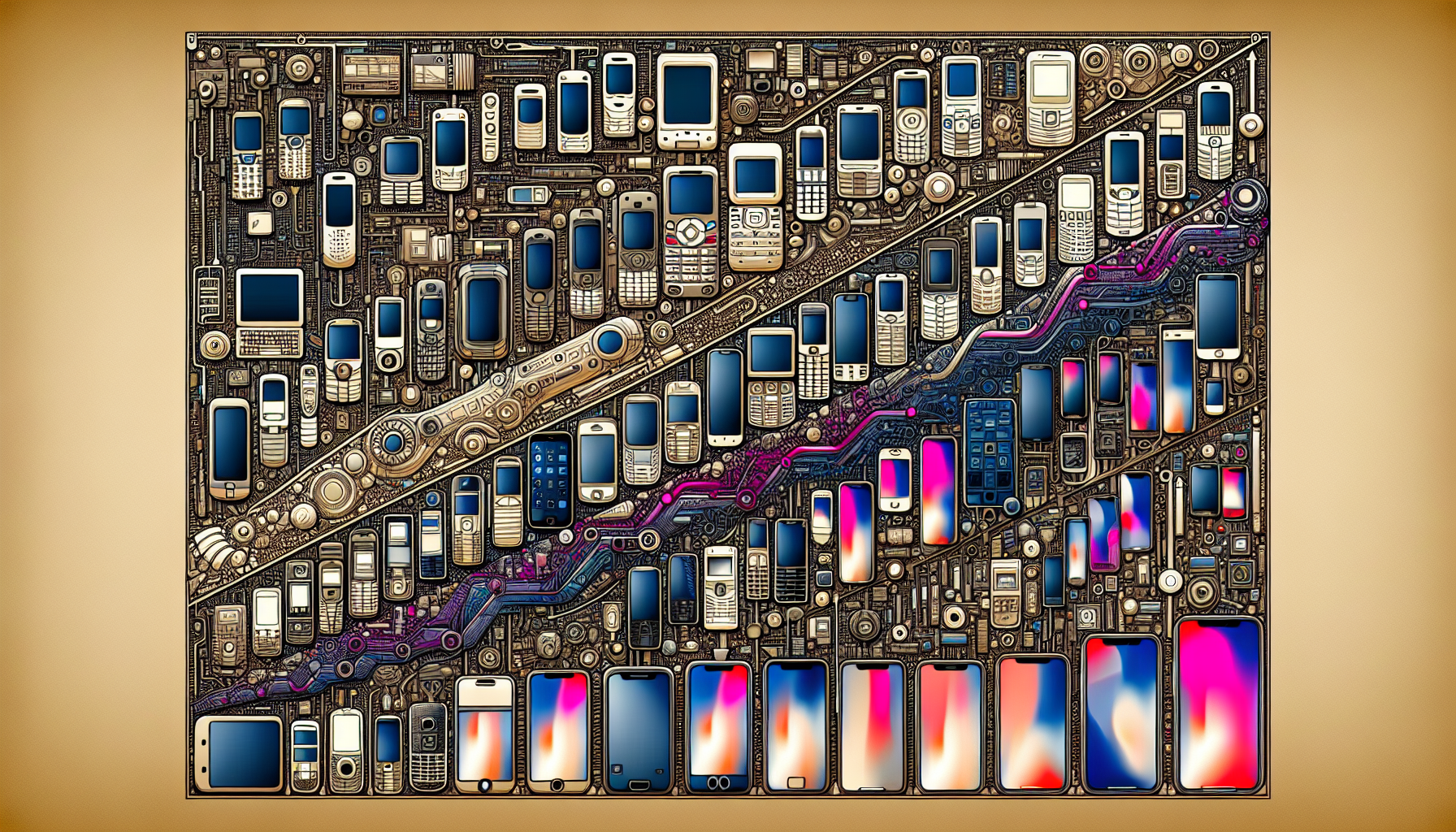
From Brick to Brain: The Journey of the Smartphone
Early Mobile Phones: The Analog Ancestry
The story of the smartphone begins long before touchscreens and app stores. The foundation was laid with bulky, analog mobile phones, often referred to as “brick phones” due to their size and weight. Motorola’s DynaTAC 8000X, released in 1983, stands as a symbolic ancestor. This behemoth offered a mere 30 minutes of talk time and cost nearly $4,000. Despite its limitations, the DynaTAC represented a significant leap, freeing communication from the constraints of landlines. The following years saw advancements in battery life, size reduction, and the introduction of features like SMS messaging, paving the way for the digital revolution.
The Dawn of Digital: 2G and Feature Phones
The 1990s ushered in the era of 2G networks, enabling digital voice transmission and opening the door to data services. Nokia emerged as a dominant force, churning out iconic models like the 3310, renowned for its durability and the addictive game Snake. These “feature phones,” while lacking the sophistication of smartphones, introduced key elements like address books, calendars, and basic web browsing through WAP. The Nokia Communicator series even hinted at the future, incorporating QWERTY keyboards and rudimentary email capabilities.
The Rise of the PDA: Precursors to the Modern Smartphone
Parallel to the evolution of feature phones, Personal Digital Assistants (PDAs) like the PalmPilot and Apple Newton gained popularity. These devices focused on personal organization, offering functionalities like note-taking, calendars, and contact management. Although lacking cellular connectivity initially, some later models incorporated it, blurring the lines between PDAs and phones. These devices introduced the stylus and touchscreen technology, laying the groundwork for the smartphone’s interface.
BlackBerry and the Email Revolution
Research In Motion (RIM), later renamed BlackBerry, recognized the growing need for mobile email access. The BlackBerry 850, launched in 1999, offered a pager, email, and limited web browsing capabilities, targeting business professionals. The device’s signature QWERTY keyboard became synonymous with mobile productivity, cementing BlackBerry’s position as a leader in the early smartphone market. Push email, a BlackBerry innovation, revolutionized communication, enabling instant message delivery and keeping users constantly connected.
The iPhone: A Paradigm Shift
In 2007, Apple’s iPhone irrevocably changed the mobile landscape. Its capacitive touchscreen, intuitive multi-touch interface, and focus on user experience set a new standard. The iPhone prioritized software and app development, launching the App Store, which became a catalyst for mobile innovation. This shift towards a software-centric approach fundamentally redefined what a phone could be, transforming it from a communication device to a pocket-sized computer.
Android Emerges: Open Source and Customization
Google’s Android operating system, launched in 2008, presented a powerful open-source alternative to Apple’s iOS. Android’s flexibility allowed manufacturers like Samsung, HTC, and Motorola to customize the OS, leading to a diverse range of devices at various price points. This open ecosystem fostered rapid innovation and competition, accelerating the development of smartphone technology and expanding its global reach.
The 3G and 4G Revolution: Mobile Data Takes Center Stage
The rollout of 3G and subsequently 4G networks dramatically increased mobile data speeds, enabling seamless web browsing, streaming video, and online gaming. This shift transformed smartphones into powerful multimedia devices, paving the way for social media apps, cloud services, and location-based services. The increased bandwidth also fueled the development of more complex and data-intensive mobile applications.
The Rise of Mobile Photography:
Smartphone cameras have undergone a dramatic evolution. Early models offered basic image capturing capabilities, but advancements in sensor technology, lens quality, and image processing software have transformed smartphones into powerful photography tools. Features like optical image stabilization, multiple lenses, and computational photography now rival dedicated cameras, further blurring the lines between professional and amateur photography.
The Future of Smartphones: Foldable, 5G, and Beyond
The smartphone continues to evolve at a rapid pace. Foldable displays are pushing the boundaries of form factor, offering larger screens in pocketable devices. 5G networks promise significantly faster data speeds and lower latency, opening new possibilities for augmented reality, virtual reality, and the Internet of Things. Artificial intelligence is increasingly integrated into smartphones, powering voice assistants, personalized recommendations, and advanced camera features. The future of the smartphone promises even greater integration with our lives, blurring the lines between the physical and digital worlds.
Keywords: smartphone evolution, mobile phone history, 2G, 3G, 4G, 5G, iPhone, Android, Nokia, BlackBerry, PDA, touchscreen, mobile technology, mobile data, mobile photography, foldable phones, artificial intelligence.














